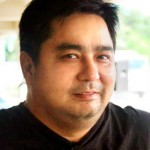Flashback Friday on Philippine motorsports
 Atty. Jerome G. Neri
Atty. Jerome G. Neri
The Scrutineer
DURING the 3rd Cebu International Documentary Film Festival, Cebuano motorsports enthusiasts had an opportunity to watch Racing with Legends, a documentary about the history of Philippine motorsports and the pioneer Filipino race car drivers.
Motorsports in the Philippines started in the 50s at the Sta. Ana Hippodrome in Manila, which was primarily a horse racing facility that was also used for car racing when there was no horse racing. It was at this venue where the late Arsenio “Dodjie” Laurel started his racing career.
Dodjie was a pioneer in Philippine Motorsports, as he was a founder and president of the first formal car club, the Cam Wreckers Association, which has organized racing as one of its aims. He was also active in Drag Racing and is the father of Philippine karting. Dodjie was also the first two-time champion in the prestigious Macau Grand Prix, winning it consecutively in 1962 and 1963.

Sadly, Dodjie was also the first fatality in the Macau Grand Prix when he had a horrific crash in the 1967 race, his car hitting the sea wall and bursting into flames. He was trapped inside. After his death, his legacy continued and so did the Cam Wreckers Association, such that in 1969 we had the First Philippine Grand Prix held right here in Cebu City. The temporary street circuit was at the reclamation area.
During the 70s, Philippine motorsports was experiencing tremendous growth. There was circuit racing in Luneta and Greenhills, where even international racecar drivers took part. It was in this era where Filipino race legends were born, such as Louei Camus, the late Arthur Tuason, Dante Silverio, and the late Pocholo Ramirez. Urban development meant the end of the Luneta and Greenhils races, which led to the birth of rallying. Rallying then became the premier motorsport in the country.
But by the late 70s, Philippine motorsports suffered a big blow when the use of fossil fuel was banned in motorsports due to the oil crisis at that time. Philippine motorsports slowed down and the legendary race drivers started racing abroad, where they still made a name for themselves and carried the Philippine flag.
RACING IN CEBU. The very first race I saw here in the Philippines was in 1987, a drag race in Manila and the venue was Meralco Ave. This race was organized by the Cam Wreckers Association. I immediately caught the racing bug.
Since there was no organized racing in Cebu, I was at the illegal street racing scene in Cebu. At that time, illegal street racing was so big that on a Saturday night, the whole reclamation area would just be filled with cars either for drag racing or from those watching.
The illegal street racing scene in the late 80s was so big that the well known street racers were called to City Hall by then Citom head Sammy Darza. We were told to formally organize ourselves, and they would help and support us with legal drag races in a controlled and safe environment.
The Cebu Auto Sport Association was born. The first organized drag race was in 1990 and the technical rules of the Cam Wreckers Association were adopted. Illegal street racing just died. Nobody wanted to race illegally at night anymore as respect to a local government that supported motorsports.
In 1992, there was another oil crisis with the first Gulf War, and racing was dead again. It took almost 10 years for organized racing to come back to Cebu, which was a drag race at the SRP in 2001, if I remember correctly.
At present motorsports is alive in Cebu, as we have karting, autocross and off-road racing. Drag racing is non-existent in Cebu, as there is no more suitable venue, but is alive and well in Bacolod City, which is now just an easy drive from Cebu. We are now reaping the fruits of the seeds planted by the pioneers of Philippine motorsports.
ENZO PASTOR CASE. The cold-booded killing of champion racecar driver Enzo Pastor has finally been solved. Apparently a gunman was hired to have him killed allegedly by a certain Domingo de Guzman III, who was having an extra-marital affair with Enzo’s wife. Both are the suspected masterminds.
What is most disturbing about this case is that the hired gunman is an active policeman, who also sells drugs. The agency that we entrust to serve and protect the citizens have guns-for-hire and drug pushers in their ranks. Maybe this is why a lot of crimes committed by persons on motorcycles that are riding in tandem remain unresolved, as it is men in uniform who are the perpetrators.



